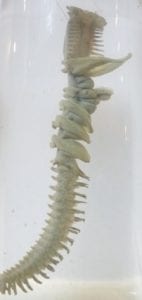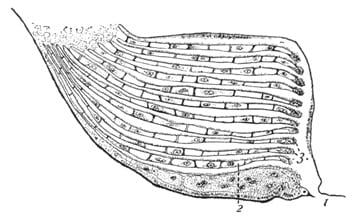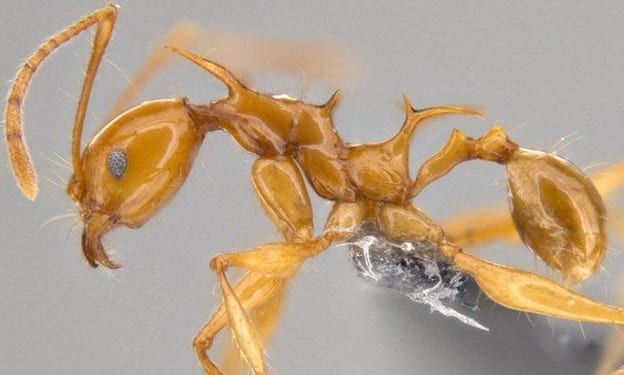A Novel Idea: Popular Culture Influences in Zoology
By Arendse I Lund, on 18 August 2016
 By Arendse Lund
By Arendse Lund
Hidden in one of the far cabinets in the Grant Museum, nestled amongst parasites and other unusual filter feeders, sits a much overlooked worm. This invertebrate marine creature is known as a Chaetopterus and is unusual because it has lived its whole adult life in a tube constructed from underwater sediment and attached to a rock. More colloquially though, the Chaetopterus is referred to as a parchment worm.

This worm (image on the right, Grant Museum, G52) has actually nothing in common with parchment, which usually is made of calf-, sheep-, or goatskin and used to create manuscripts. Nor does it have anything to do with those worms that destroy manuscripts to the detriment of scholarship everywhere. Actually, it takes its name from the papery, parchment-like burrows it lives in.
Similar to how visitors who are fans of Pokémon are thrilled to espy some of the animals the monsters are based on, book-loving visitors to the museum seem to take great delight in this worm’s name, granting it a celebrity status higher than it might otherwise have. A worm, by any other name, might not be as popular.
Literary lovers will also be happy that spiders and other arachnids have book lungs, respiratory organs unrelated to the lungs of humans. This diagram from John Henry Comstock’s aptly titled The Spider Book depicts a cross section of a spider’s book lung. These lungs are arranged with horizontal, leaf-like folds. Composed of stacks of alternating air pockets, these “pages” usually do not need to move to work. Similarly, horseshoe crabs have book gills, which are external appendages rather than internal organs.

Figure 2: A spider’s book lung with the #3 marking the leaves of the book lung (Comstock, The Spider Book, pg. 146)
Luckily for fans of whimsy, there is a fair amount of freedom involved in describing or naming species. The International Code of Zoological Nomenclature instructs that: “Authors should exercise reasonable care and consideration in forming new names to ensure that they are chosen with their subsequent users in mind and that, as far as possible, they are appropriate, compact, euphonious, memorable, and do not cause offence.” This leniency with naming animals, in comparison to naming astronomical bodies, has allowed for newly discovered species to be named after expedition benefactors, popular celebrities, and even mythical creatures.
In the late 1990s, a species of turtle was dubbed Psephophorus terrypratchetti after Terry Pratchett, whose Discworld series takes place on that back of a giant turtle. A species of ancient lizard was given the moniker Clevosaurus sectumsemper as an allusion to the vicious spell Severus Snape invents in the Harry Potter series. Similarly, a 66 million year-old dinosaur was named Dracorex Hogwartsia, or the “Dragon King of Hogwarts,” and resembles the fictional Hungarian Horntail. Dragons seem to be a popular source of naming inspiration: Two recently discovered ants were even named after Daenerys Targaryen’s dragons from Game of Thrones: Pheidole drogon and Pheidole viserion.

Figure 3: Pheidole viserion, whose spiked appearance and blonde color caused it to be named after the dragon from Game of Thrones. (Photo: Okinawa Institute of Science and Technology).
While all these are fairly straight-forward allusions to fictional works, one paleontologist took it even further when she discovered a fossil tetrapod near a quarry in Scotland. She developed a name which only works in translation: Eucritta melanolimnetes, or “the true creature from the black lagoon.”
Sometimes that creativity fails though. An early twentieth-century biologist, overwhelmed at the prospect of naming a whole slew of new moth species at once, decided on: Eucosma bobana, E. cocana, E. dodana, E. fofana, E. hohana, E. kokana, E. lolana and E. momana.
But with thousands of new species discovered a year, perhaps that’s understandable.
 Close
Close

